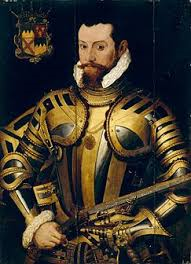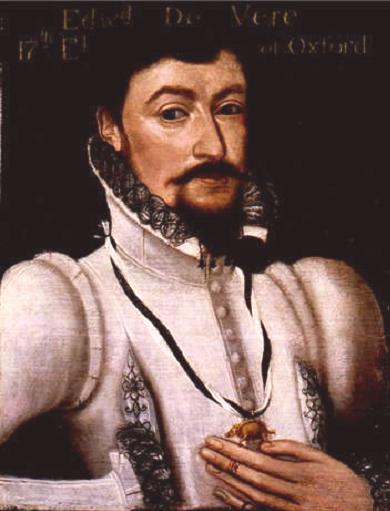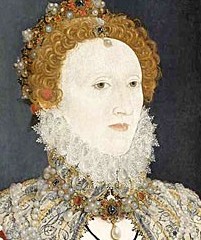A young girl whose maternal relatives
she needed, but were no longer alive.
By seven, those relations had gone,
and her mother dead by execution.
By her father, brother and sister bastardised
and throughout that trauma she survived.
She was a clever student her tutors said
and that helped her cope when her father was dead.
Thomas was a cousin, too distant to be threatening,
but close enough to count, by her reckoning.
He was at court, as her brother’s companion.
Edward really liked his bright disposition.
She was constantly in a precarious position,
shunted around for personal supervision.
Placed at the home of stepmother Catherine Parr,
whose new husband, Thomas, had abused her.
Transferred to Denny’s home in Summer 1548
with two servants she trusted, not to separate.
Denny interviewed them all at Hatfield in ‘49,
but if seeking a confession of abuse, he was wasting his time.
Elizabeth, Kat Ashley, and Parry formed an alliance.
The Princess defended herself with wit and defiance.
Thomas Seymour was executed in March 1549.
Elizabeth sent to the Tower, biding her time.
Aged 12, Thomas Butler was drafted to court
to give Henry’s son, Edward, active support.
He believed that, if surrounded by young noblemen,
his son, Edward, would socially benefit from them.
Gradually the noblemen drifted away,
but Thomas and Barnaby were asked to stay.
They did benefit from a complete education
and contacts at court above their station.
But courtiers would avoid and criticise them,
as foreign upstart young Irishmen.
His father died after a banquet in London.
At 15, Thomas was made a royal ward then.
At 16, he went with Somerset’s troops to Scotland,
where battle transformed a boy to a man.
He had gone as a volunteer to fight,
that would change his outlook overnight.
That same year, 1547, Henry VIII died.
Nine-year-old Edward, as King to preside.
The coronation over, in the aftermath,
Edward made Thomas a Knight of the Bath.
Mary Tudor knew Tom’s pedigree,
a good friend to her brother and a KB.
He helped her put down Wyatt’s rebellion.
She named him “Black Tom” and asked him to stay on.
I was hoping that within this chronology
I could introduce a little biology.
Given the circumstance and situation
permit an indulgence in speculation.
The young Irishman, with good looks and black hair,
would have been noticed by the young princess there.
Born within two years of each other,
an attraction formed with one another?
For Elizabeth, life was often precarious
with people who could be so treacherous.
Such turmoil made her self-sufficient
and constant threats, more resilient.
It is known that, when people are rejected,
they seek to find where they are accepted.
A special bond will form between them
and fondness and friendship will then blossom.
Many a young girl has fallen to pregnancy
seeking affection and also intimacy.
And young men with hormones at maximum
will be tempted when a girl approaches them.
The palace at Hatfield was a favourite location
and nice setting for a romantic liaison.
Young Bess was sweet sixteen on 7th of September.
A party celebration that she would remember?
A birth in Spring of the following year
would have taken place in Hertfordshire.
A baby son born in 1550
would have to be placed in a noble family.
She had servants who were always loyal to her
and careful planning would be on the agenda.
A royal baby with an illegitimate story
would have to be placed in a suitable family.
John, Earl of Oxford, had no son and heir,
and a new wife of only one year.
They would be the right kind of foster family.
This royal practice would be known to Margery.
From 1550-51 Thomas was rarely at court
that news was given as a report.
By Christmas ‘51, he was there for celebrations
introducing an energetic dance from the Irish nation.
Hands on hips, stamping, on the court floor –
this wild gallop was called the Trenchmore.
Thomas was dancing, disguised as a German,
a lively Irish jig that was for everyman.
In 1552, he became Earl of Ormond.
That title gave a special bond.
Not just Tom Butler, but an earl
with a family crest to unfurl.
The Earl of Oxford was a premier earl,
always close to the family – royal.
To take the baby would do them both a favour
and he would have a son and heir as saviour.
There was no record of Edward’s christening.
For an earl’s son, that was an unusual thing.
Children were sent away for tutored education,
all part of the nobleman’s destination.
1559 saw Elizabeth’s coronation.
She visited Castle Hedingham in 1561.
Well entertained there for five days,
eleven-year-old Edward within her gaze.
In 1562, the Earl suddenly died
within days of a will being supplied.
Twelve-year-old Edward made a crown ward.
The wardship not sold as was the usual record.
He was sent to London straight away
and lodged with Cecil that same day.
Now, the Queen had him close by
to watch his progress personally.
The best you can hope for, if you are royal,
is that your servants are faithful and loyal.
Elizabeth had seen thus far in her life
that a woman must handle conflict and strife.
Why would I then speculate?
Because I looked at three portraits,
their features and colouring much relate.
I also looked at specific dates.

(Age 30)

Artist unknown, c 1585
(Age 52)

Gheeraerts, c 1586
(Age 36)

Nicholas Hilliard, c 1574
(Age 41)

Artist unknown, c 1575
(Age 25)
The three portraits in line show a resemblance in the black hair, hairline, and features of Thomas and Edward. The resemblance with Elizabeth is in the long slim fingers, but they may have been de rigueur in portraits of that time.
The foppish portrait of Edward, wearing a hat, does look very similar in features to the one of Elizabeth.
The portraits which do not look alike are the two of Edward. They seem like different
people.